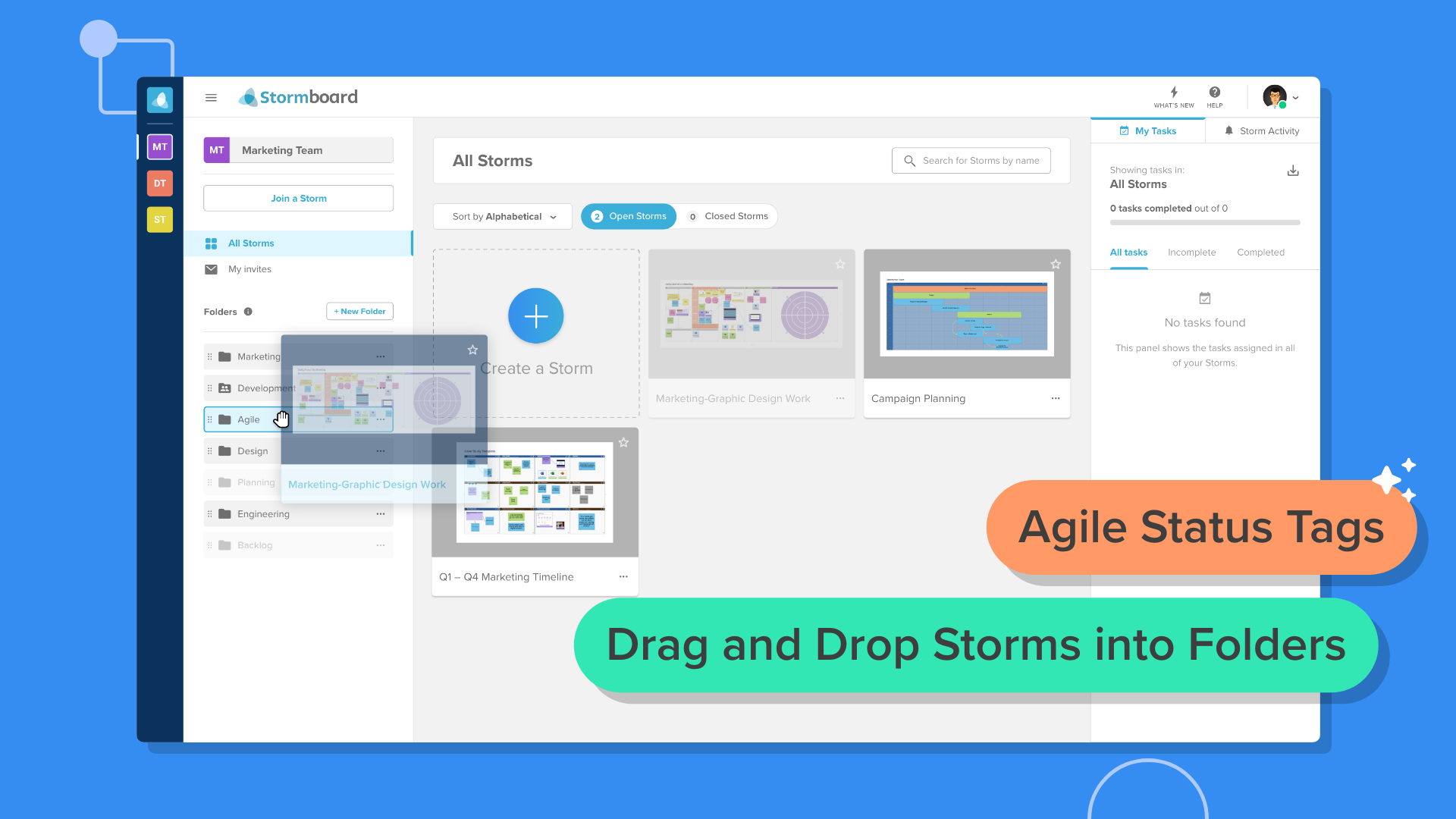Collaborative Work for Hybrid Agile Teams – Tips and Best Practices
A massive 71% of companies(1) in the U.S. have converted to an agile project management strategy. And it's easy to see why. With a 64% success rate, it outperforms its nearest competing methodology, waterfall, by nearly 1.5 times! It has even been reported that companies adopting the agile methodology have seen a 60% profit growth!
These dynamic teams operate on tight delivery timelines and constantly work cross-collaboratively. But the rise of remote and hybrid work threatens one of the core ideas of the agile manifesto: face-to-face communication.
If you're concerned about how hybrid work might affect knowledge transfer, agile workflows, and collaboration, look no further. Hybrid work doesn't have to impact your organization negatively.
Embrace Technology for Hybrid Team Productivity
A key aspect of agile work is collaboration—specifically, face-to-face collaboration. Remote working can get in the way of that. That being said, if there's one thing we've learned in recent years, it's how to work (effectively) with others remotely without having to be physically side-by-side.
Luckily, there's been a massive surge in the development of online meeting technology. Now, we're seeing those systems merged with agile project software, making collaboration more possible.
Key features of an online agile productivity tool include:
Simple visual interfaces to plan, implement, and manage projects and delivery
Seamless integration and information sharing from backlog tools, including Jira, Rally, and AzureDevOps
Visibility into item status, task owners, and dependencies to gauge progress
A variety of templates for different frameworks, approaches, and methodologies
A shared virtual space for dispersed team meetings to brainstorm, plan, and problem-solve
Source: Freepik
Essentially, the goal is to create an online space replicating a boardroom. Picture a space where sharing ideas, messages, and concepts can be done easily, while everything is accessible 24/7. Whether planning sprints or improving a workflow, the software should be intuitive and not add extra work to your team's plate. In fact, the key is finding a hybrid solution that improves productivity.
Use the Right Tools
When challenges arise in a hybrid work setting, it's more difficult to have impromptu meetings with a widely dispersed team. A small on-site group could still carry out a quick meeting, but they would still need to update the remote workers afterward. Unfortunately, that scenario could make remote employees feel left out and impact their trust.
While it may be more challenging to hold impromptu meetings as soon as problems arise, it's wise to plan hybrid collaborations to conduct key decision-making activities and brainstorm so all team members can be involved.
This is where digital whiteboard tools come in handy. Not just for brainstorming, having a visual interface to facilitate a remote meeting shows project progress at a glance, makes it easy to convey ideas, and zoom in on an issue like a bottleneck that needs to be addressed. Working virtually using a shared space also serves as a reference point for data sharing.
When analyzing a hybrid collaboration tool for agile teams, pay close attention to items that work synchronously with your most important data sources, namely your product backlog.
If you're having a remote meeting and making decisions about a work item and need to update it, you'd have to either stop what you were doing to update your backlog or scribble a note and update it after the meeting. Not exactly productive to take notes twice, is it? Look for a solution that works in sync with your project management tool or, even better - all the tools in your tech stack.
Sprint Planning with Stormboard
Maintain a single source of truth for everybody
Stormboard syncs with your backlog so both remote and co-located teams share the same data 24/7.
Learn More!
Don't Underestimate the Power of Team Building
32% of remote workers say they struggle to build solid relationships, while 23% report feeling lonely at work.
Even if your agile collaboration is still mostly in-person, it is of the utmost importance that the team feel connected. Getting to know one another—to understand each other's nuances, ways of working, and tone of voice—can directly impact the project's success. Also, it's common knowledge that working with people you get along with and understand not only makes life a lot easier but also improves positive collaboration.
When it comes to remote and hybrid work, team-building should be prioritized even higher. So much of our natural communication is non-verbal and relies on body language, and when that is taken away, we can feel disconnected or insincere. It might seem like organizing a team-building event might be a waste of precious project working time, but if remaining agile while working online is going to work for you, team-building is a necessity.
It seems counterproductive, but including aspects of non-business time within the project parameters will keep your team feeling connected, valued, and motivated to work towards shared goals. The term ‘team-building' can encompass a lot, and it doesn't mean you need to organize thrilling outdoor adventures every other week for your team to partake in - unless you want to!
Team building can be as simple as including icebreakers at the start and end of a meeting. Or even organizing coffee catch-ups specifically to get to know everyone better. Simply reminding the team how valued they are will go a long way.
Make Meeting Equity Critical
Another aspect of project management that has been complicated in the age of hybrid work is achieving meeting equity. When the whole team is in the same place, in the same room, with the same equipment, and looking at the same whiteboard, each person's experience is the same. That can't be said when half the team is outside the boardroom.
In hybrid workplaces, it's entirely possible that half the team is in the office together and the other half scattered across the country—one in their living room, one in the backyard, one in a coffee shop—all logging in from different countries and with different WiFi speeds.
With that in mind, it's paramount that meeting equity is seen as a priority and sorted out early on in (if not before) the project kickoff.
One way of doing that is to ensure the team is well-connected, as noted above, but other areas that need to be considered and actioned are much more concrete. Namely, investing in the right software and tools.
Ensuring that all project participants have the right devices, subscriptions, webcams, etc., will help build a more equitable workplace and provide each person can work to their best abilities.
Another way to achieve meeting equity is to encourage full participation from all members in a meeting, whether dispersed or co-located. There are many ways to foster engagement and collaboration by making people feel their voices are seen and heard. Even something as simple as holding votes to gauge sentiment and help prioritize tasks levels the playing field and drives participation.
Source: Freepik
Effective Agile Collaboration for Hybrid Teams
The rise of remote and hybrid working does not mean the end of your agile project management!
Agile teams can effectively work in a hybrid situation with the right care and technology. Ensuring your team has an equitable experience, the right technology, and the team feels connected means your growth won't be affected.
Since the Covid-19 pandemic, hybrid working has increased, and all research suggests employees want to keep flexible work arrangements alive– don't let it get in the way of your agile teams' efficiency.
Contact us now to book a demo with one of our experts to see how Stormboard can be the perfect collaboration tool for your agile organization.
Talk to an Expert
Originally published on Sep.7/2022














